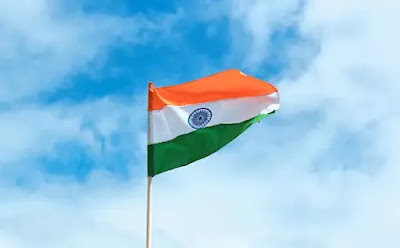The integration of princely states into the Indian Union after independence is a remarkable chapter in India's history.
As the British Raj ended in 1947, India faced the colossal task of unifying over 565 princely states, each with its own governance and autonomy.
This article explores the complexities, strategies, and key figures involved in the integration process, providing an in-depth understanding of how these diverse entities came together to form a united India.
The Princely States at Independence
At the time of India's independence, the subcontinent was divided into British India and princely states. The latter were semi-autonomous regions ruled by local monarchs under the suzerainty of the British Crown.
These states varied significantly in size, wealth, and administrative capabilities.
British Policy and Princely States
The British had established a relationship with the princely states through various treaties and agreements. These arrangements allowed the rulers considerable autonomy in internal matters while the British controlled foreign policy and defence.
Upon independence, the British withdrew their suzerainty, leaving the future of these states in a state of uncertainty.
The Integration Process
The integration of princely states into the Indian Union was orchestrated through a combination of diplomacy, persuasion, and strategic use of force when necessary. This complex process can be broadly divided into several phases:
1. Initial Diplomacy and Persuasion
Sardar Vallabhbhai Patel and V.P. Menon
Sardar Vallabhbhai Patel, India's first Deputy Prime Minister and Minister of Home Affairs, played a crucial role in the integration process.
Assisted by V.P. Menon, Secretary of the States Department, Patel embarked on a mission to convince the princely rulers to accede to India.
Instrument of Accession
Patel and Menon formulated the Instrument of Accession, a legal document that allowed princely states to join India while retaining autonomy in certain areas like defense, foreign affairs, and communications.
This approach provided a flexible framework that appealed to many rulers.
2. The Role of the Indian National Congress
The Indian National Congress (INC) also played a significant role in the integration process. The party's leadership, including Jawaharlal Nehru, emphasized the importance of a united India.
Congress leaders engaged with princely states' rulers, explaining the benefits of joining the Indian Union and the potential drawbacks of remaining independent.
3. Coercion and Military Action
Operation Polo
In some cases, persuasion was insufficient, and the Indian government resorted to military action. The most notable example is Operation Polo, the military campaign to annex Hyderabad.
The Nizam of Hyderabad had initially refused to join India, leading to a brief but decisive military intervention in September 1948. The operation resulted in Hyderabad's integration into the Indian Union.
Junagadh and Kashmir
Similar strategies were employed in Junagadh and Kashmir. Junagadh, a small state in present-day Gujarat, had acceded to Pakistan despite having a Hindu majority population.
This decision led to unrest and eventually, Junagadh was integrated into India through a plebiscite.
Kashmir's integration involved complex political and military maneuvers, resulting in its accession to India under contentious circumstances.
4. Consolidation and Integration
Administrative Reforms
Once the princely states acceded, the next challenge was their administrative integration. The Indian government undertook extensive reforms to merge these states into existing provinces or create new ones.
This process involved restructuring administrative boundaries, integrating legal systems, and standardizing governance practices.
Economic and Social Integration
Economic policies were also implemented to ensure the development of newly integrated regions. Infrastructure projects, educational institutions, and healthcare facilities were established to promote economic and social integration.
Land reforms were introduced to address feudal structures prevalent in many princely states.
Case Studies of Integration
1. Hyderabad
Background
Hyderabad was one of the largest and wealthiest princely states. Ruled by the Nizam, it had a diverse population and a strong economy. However, the Nizam's decision to remain independent posed a significant challenge to Indian unity.
Integration
Operation Polo led to Hyderabad's integration into India. The subsequent administration focused on integrating Hyderabad's economy and infrastructure with the rest of India. Efforts were made to address communal tensions and promote social harmony.
2. Travancore and Cochin
Background
Travancore and Cochin were smaller princely states in southern India. Both had progressive administrations and a relatively high standard of living.
Integration
These states acceded to India peacefully. Their integration involved merging them to form the state of Travancore-Cochin, which later became part of Kerala.
The focus was on leveraging their existing infrastructure and promoting regional development.
Challenges and Controversies
Resistance from Rulers
Some princely rulers resisted integration, fearing the loss of their power and privileges. The Indian government had to navigate these challenges through a combination of negotiation and pressure.
Communal Tensions
Integration efforts also had to address communal tensions, especially in states with significant religious diversity. Ensuring peace and stability was crucial for successful integration.
Economic Disparities
There were significant economic disparities between different princely states. The Indian government had to implement targeted development programs to bridge these gaps and promote balanced regional development.
Final Thoughts
The integration of princely states into the Indian Union after independence was a complex and multifaceted process. It required astute diplomacy, strategic use of force, and comprehensive administrative reforms.
The efforts of key figures like Sardar Vallabhbhai Patel and V.P. Menon were instrumental in achieving this monumental task.
Despite the challenges, the successful integration of princely states laid the foundation for a united and cohesive India, contributing significantly to the nation's political stability and development.
Edited by Shugunpal Kaur
This article has been authored exclusively by the writer and is being presented on Eat My News, which serves as a platform for the community to voice their perspectives. As an entity, Eat My News cannot be held liable for the content or its accuracy. The views expressed in this article solely pertain to the author or writer. For further queries about the article or its content you can contact on this email address -kaurshugun65@gmail.com





.jpeg)





0 Comments